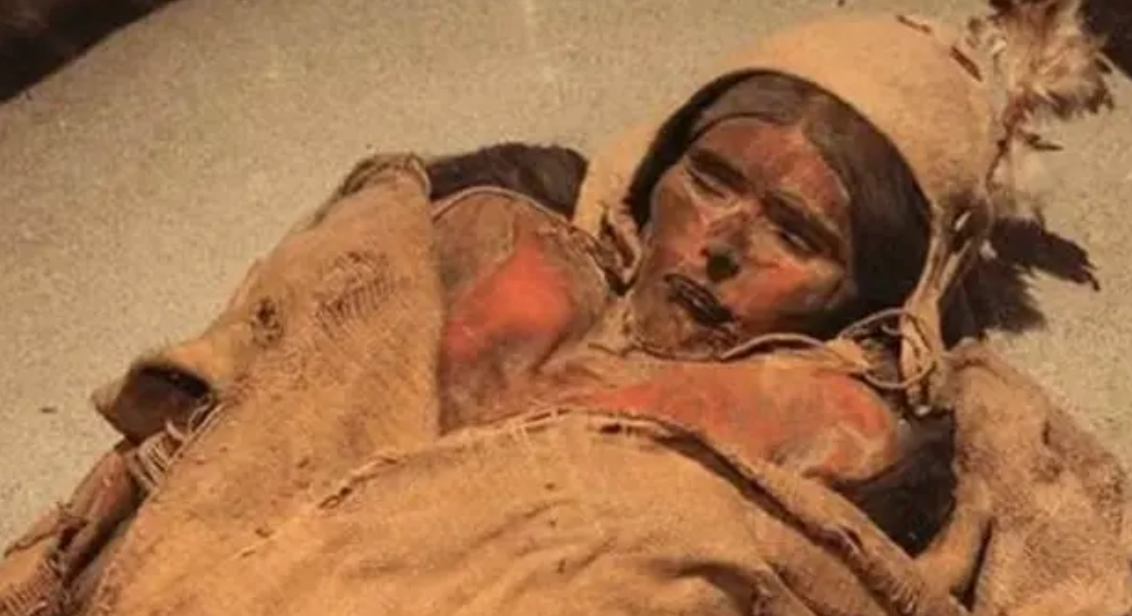Unveiling the Timeless Allure of the Princess of Xiaohe: A 4,000-Year-Old Icon Captivating Hearts

In the vast expanses of the Taklamakan Desert, a discovery of profound historical significance lay buried beneath the sands—a mummy known as the Princess of Xiaohe. Nearly 4,000 years after her death, this ancient icon continues to captivate hearts and minds with her enigmatic beauty and the rich cultural legacy she represents.
The Princess of Xiaohe, discovered in the Xiaohe Tomb complex in the early 20th century, is one of the most well-preserved mummies from the Bronze Age. Her strikingly well-preserved features—high cheekbones, delicate skin, and long auburn hair—offer a hauntingly human connection to a distant past. Her burial site, adorned with intricately woven textiles, wooden artifacts, and symbolic items, paints a vivid picture of the Xiaohe culture, a civilization that once thrived in what is now the Xinjiang Uyghur Autonomous Region of China.

Her discovery has ignited global fascination, prompting scholars and enthusiasts alike to delve into the mysteries surrounding her life and death. The meticulous preservation of her body and the grave goods buried with her provide a wealth of information about the customs, beliefs, and daily life of the ancient Xiaohe people.
Dr. Mei Ling, a prominent archaeologist who has studied the Princess extensively, describes her as a “window into a forgotten world.” The elaborate craftsmanship of her burial attire, including a finely woven woolen dress and delicate accessories, suggests she held a significant status within her community. These artifacts also indicate a sophisticated understanding of textile production and artistry that was advanced for her time.

The Princess’s captivating presence extends beyond her physical remains. The artifacts found with her—wooden carvings, reed baskets, and mysterious symbols painted on wooden plaques—have sparked debates and theories about the Xiaohe people’s spiritual and cultural practices. Some researchers propose that the symbols may represent early forms of writing or ritualistic iconography, hinting at a complex societal structure and belief system.
Public exhibits featuring the Princess of Xiaohe have drawn crowds worldwide, with visitors mesmerized by her timeless allure. Museums have created immersive displays that transport attendees back to the Bronze Age, offering interactive experiences that highlight the craftsmanship and daily life of the Xiaohe culture. Her story has inspired artists, writers, and filmmakers, who seek to capture the essence of her enigmatic beauty and the legacy of her people.

For historians and archaeologists, the Princess of Xiaohe represents a treasure trove of knowledge. Ongoing research continues to uncover new insights into her life and the broader context of the Xiaohe civilization. Advances in technology, such as DNA analysis and radiocarbon dating, are providing deeper understanding of her origins, health, and the migratory patterns of ancient populations.
The timeless allure of the Princess of Xiaohe lies not only in her physical beauty but also in the cultural richness she embodies. Her story transcends millennia, reminding us of the enduring human quest to understand our past. As we continue to explore her mysteries, the Princess of Xiaohe remains a symbol of the timeless connection between humanity and history, a bridge linking us to the lives and legacies of those who came before.












